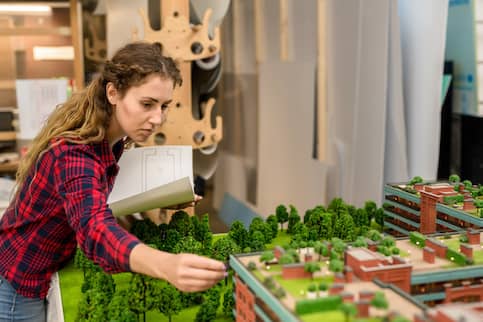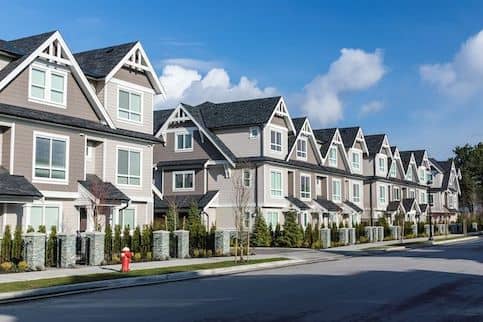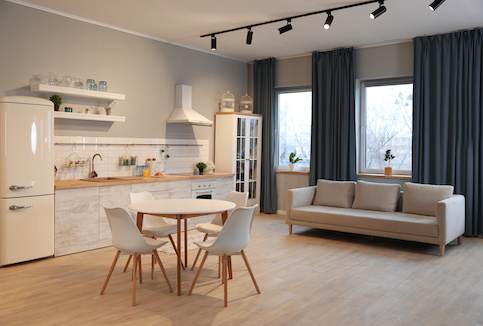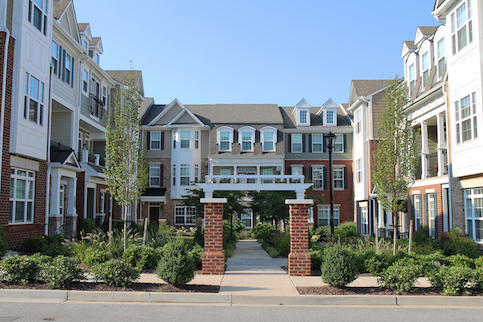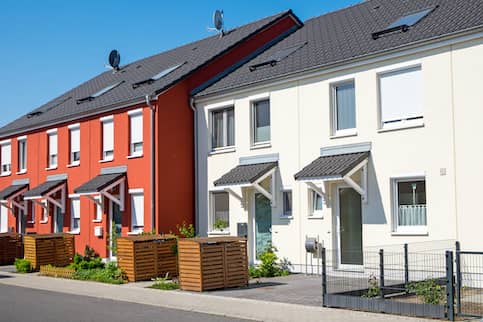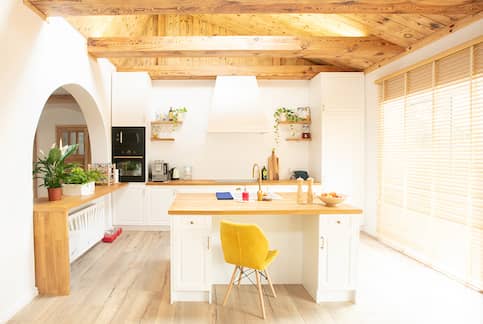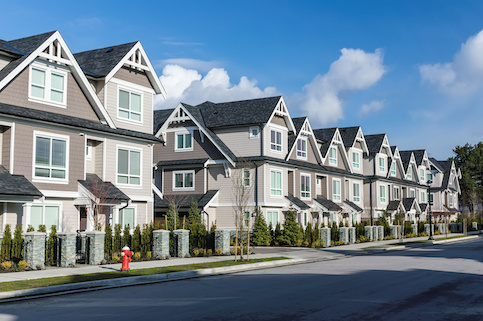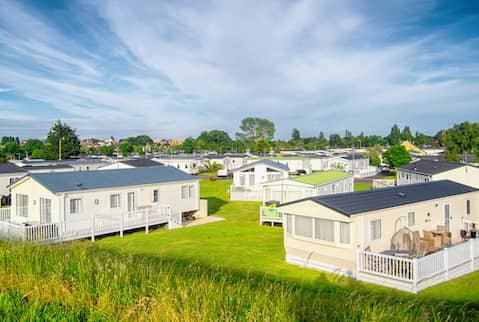When hunting for your next home, you might come across communities labeled as PUDs, or planned unit developments. These are areas made up of one or several property types, including single-family homes, townhomes and condos.
What sets these developments apart, though, is that residents within a PUD own both their property and the lot on which it sits. There are common areas that are collectively owned by the PUD’s residents. Meanwhile, a homeowner’s association, made up of officers elected by the PUD’s owners, governs the management and operation of these common areas.
Is a PUD the right housing choice for you? That depends on how comfortable you are following the rules set by a homeowners association and how excited you are to live in a self-contained community.
See What You Qualify For
You can get a real, customizable mortgage solution based on your unique financial situation.
What Is A Planned Unit Development (PUD) In Real Estate?
Buying into a PUD is much like purchasing a condo: You own your home but share ownership of the development’s common areas with your neighbors. Unlike with a condo, you can purchase homes of many different types, including townhouses and single-family homes.
Zoning Standards
PUDs don’t have to follow traditional zoning standards. Neighborhoods in a PUD can contain single-family homes, condos, townhomes, stores, restaurants and public assets such as community centers and swimming pools all clustered together. Some homes might be zoned to sit close to the edge of roads, while others might be required to sit several feet back. Often one set of blocks in a PUD will contain residences that look completely different from those in another set.
Expanded Amenities
PUDs also often feature amenities that are difficult to find in other developments, everything from high-end fitness centers to stores and luxury swimming pools. The goal is to create a sort of miniature city for residents. They can bank, exercise, dine out and in many cases even go to school without leaving the PUD.
See What You Qualify For
Buy A Home
Discover mortgage options that fit your unique financial needs.

Refinance
Refinance your mortgage to have more money for what matters.
Tap Into Equity
Use your home’s equity and unlock cash to achieve your goals.
PUD Vs. Homeowner Association (HOA)
There is a significant difference between a PUD and a homeowners association (HOA). The PUD is the development itself. The HOA is a sort of governing body made up of residents of the PUD. This association owns the common areas of the property – including parks, ponds, playgrounds, swimming pools, gyms and recreation centers – and is responsible for managing and maintaining them.
When you buy property in a PUD, you must also become part of the HOA. This association is responsible for operating and maintaining the public areas of the PUD and for the upkeep of the PUD’s entrance areas and green spaces.
Homeowners associations are generally run by an elected board, whose members vote on landscaping contracts, maintenance schedules and the requirements for newly built housing.
You’ll pay dues to this association each month. The association’s rules might also govern how you maintain your own home, possibly restricting the type of plants you can grow, the color you can paint your property and even the type and size of decorations you’re allowed to display.
Characteristics Of A PUD Development
While all PUDs are different, they may contain certain characteristics:
Different Types Of Homes
PUDs feature different types of homes that sell at various price points. In some PUDs, this might mean larger and smaller single-family homes. In others, it might mean a wider mix of housing types, including townhomes, condos, row houses and single-family homes.
Access To Entertainment
These developments often have their own shopping districts, bars, entertainment centers and restaurants. Residents of the community can typically walk to these amenities. The goal is to create a type of self-contained community in which residents could conceivably fulfill all their shopping, dining and entertainment needs without leaving the PUD.
Self-Contained Communities
Many PUDs might even contain office buildings, cultural centers and schools. Again, this helps create a self-contained community in which residents can learn, work and live without leaving the development.
Shared Common Areas
The common areas are often a selling point of PUDs. Many of these developments contain playgrounds, swimming pools, gyms, community centers and meeting rooms. Residents might need to swipe a key card to gain access to some of these community areas. The PUD’s homeowners association generally oversees the operation and maintenance of these common areas.
Extensive Landscaping
Extensive landscaping is another key element of most PUDs. The neighborhoods making up a PUD are often surrounded by wooded areas, ponds, flower gardens or well-manicured lawns. Again, homeowners associations are tasked with maintaining these landscaped areas, a job that includes hiring landscaping companies and reviewing and renewing these companies’ contracts.
Security
Security is another draw for many who buy into PUDs. Some PUDs are gated communities, requiring residents to show identification or swipe a card when they enter the development. Others maintain their own private security. The residents of the PUD pay for these services through their homeowners association dues.
How To Determine If A Property Is Part Of A PUD
Interested in buying a home in a PUD? You’ll have to first determine if the property you are buying sits in one of these developments. The easiest way to tell whether a home you are considering is part of a PUD is to ask your real estate agent first. But you should also know that PUDs typically have the following characteristics:
- Ownership of the home and lot: When you buy into a PUD, you will own both the home and the lot on which it sits.
- Homeownership association membership required: PUDs require members to join a homeowners association and pay HOA fees to it.
- Limited access to amenities: Only the residents of a PUD and their authorized guests can use its amenities.
- Restrictive covenants: Specific rules dictate how property owners can use or modify their homes. The PUD’s rules, for instance, might state that you can only plant flowers native to the area or that you can only paint your home in one of five colors.
Pros And Cons Of PUDs
As with all real estate, PUDs come with their own pros and cons.
Pros Of A PUD
Some of the benefits of living in a PUD may include:
- Amenities: PUDs usually feature such community amenities as swimming pools, community centers, restaurants, stores, playgrounds and landscaped parks. By living in a PUD, you get access to all these common areas.
- Convenience: Because many PUDs have their own retail and dining districts, you can eat and shop without leaving your community. Some PUDs even have their own onsite public schools.
- Land ownership: When you buy into a PUD, you purchase not only your home, but also the land on which it sits. This could boost the value of your purchase.
- Security: Many PUDs come with their own onsite security, which could boost your peace of mind.
- Aesthetics: Most PUDs place restrictions on the types of buildings and landscaping that can fill their spaces. This could be an inconvenience if you really want to paint your home a color that is not allowed. But these rules do promote a specific look that might appeal to you.
Cons Of A PUD
There are negatives with living in a PUD, too. These may include:
- Rules and regulations: You will have to follow covenants, conditions and restrictions when living in a PUD. You might be restricted, for instance, from building your home too close to the road, painting it a certain color or planting non-native plants.
- HOA fees: You will pay monthly fees to the homeowners association that operates and maintains the common areas of your PUD. That could be an expense of hundreds of dollars every month.
- Proximity to other neighbors: Depending on what neighborhood you buy into, your home might be located close to your neighbors. If you prefer large swaths of empty space, a PUD might not be the best choice for you.
- Selling your home: The PUD you choose might be perfect for you. But when it’s time to sell, you might struggle to find buyers for your home. Not all buyers want the rules and restrictions that come with living in a PUD. This might make it more difficult for you to find buyers when you’re ready to sell your home.
The Bottom Line
Buying a home in a PUD comes with plenty of benefits, including access to common-area amenities. But this type of homeownership isn’t for everyone. You’ll need to pay HOA fees and follow your development’s rules and regulations.
If you are interested in buying a home in a PUD, it’s smart to get approved for a mortgage. That way, you’ll know how much home you can buy before you start looking at properties.
Take the first step toward buying a house.
See what you qualify for.

Dan Rafter
Dan Rafter has been writing about personal finance for more than 15 years. He's written for publications such as The Washington Post, Chicago Tribune and Wise Bread.
